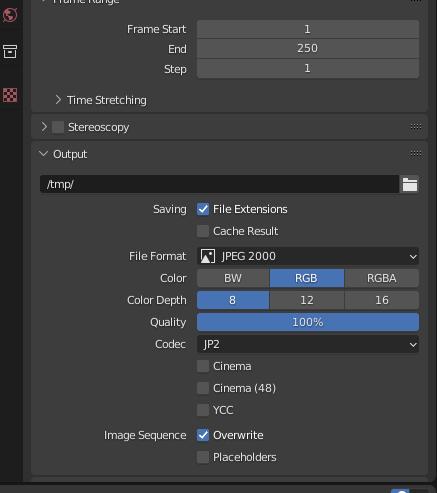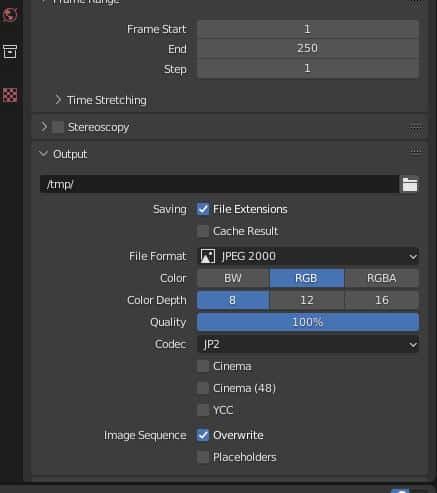Installing Ffmpeg on Linux Shared Hosting can enhance the multimedia capabilities of your website, allowing you to easily manipulate and stream various audio and video formats. With its powerful features, Ffmpeg has become a popular choice for developers and content creators alike. But how can you install Ffmpeg on your Linux Shared Hosting? Let’s explore the process step by step.
To install Ffmpeg on Linux Shared Hosting, you will first need to ensure that you have SSH access to your hosting account. This will allow you to connect to the server and execute the necessary commands. Once you have SSH access, you can begin by logging into your account and navigating to the terminal. From there, you can use package managers like apt-get or yum to install Ffmpeg, ensuring that you have the necessary dependencies and libraries. Additionally, it’s important to note that some hosting providers may restrict access to certain software installations, so it’s advisable to check with your provider beforehand.
Installing Ffmpeg on Linux Shared Hosting requires following a few steps. First, connect to your hosting account using SSH. Then, navigate to the directory where Ffmpeg will be installed. Next, download the Ffmpeg package and extract its contents. Compile and install Ffmpeg by following the provided instructions in the documentation. Finally, test the installation by running a sample command to ensure it’s functioning properly. With these steps, you’ll have Ffmpeg successfully installed on your Linux Shared Hosting.

Installing Ffmpeg on Linux Shared Hosting: A Comprehensive Guide
If you’re running a website that requires video processing or streaming capabilities, installing Ffmpeg on your Linux shared hosting is essential. Ffmpeg is a powerful multimedia framework that allows you to manipulate and convert audio and video files. In this guide, we’ll walk you through the step-by-step process of installing Ffmpeg on your Linux shared hosting environment. By the end of this article, you’ll have a fully functional Ffmpeg installation and be ready to take advantage of its extensive features.
Before diving into the installation process, it’s important to note that the steps may vary depending on your hosting provider and the specific Linux distribution you’re using. However, the general principles remain the same. If you encounter any issues or have specific requirements, it’s best to consult your hosting provider’s documentation or support team for assistance.
Step 1: Check Server Requirements
Before proceeding with the installation, you need to ensure that your Linux shared hosting meets the minimum requirements for running Ffmpeg. This ensures that the installation process goes smoothly without any compatibility issues.
Here are the general server requirements for installing Ffmpeg:
- Linux server with root access
- At least 512 MB of RAM
- Enough storage space for Ffmpeg and any processed media files
- PHP version 5.4 or higher
- Web server (Apache, Nginx, etc.)
- Basic command-line knowledge
It’s also recommended to have a stable and fast internet connection during the installation process, as Ffmpeg requires downloading several dependencies.
Step 2: Connect to Your Linux Shared Hosting
To begin the installation, you’ll need to connect to your Linux shared hosting via SSH (Secure Shell). SSH allows you to securely access your hosting server and issue commands remotely.
To connect to your Linux shared hosting, follow these steps:
- Open your preferred SSH client. If you’re using a Windows machine, you can use tools like PuTTY or Git Bash. On macOS or Linux, you can use the built-in Terminal application.
- Enter the SSH command provided by your hosting provider or the IP address of your server:
ssh username@your_server_ipReplace “username” with your SSH username and “your_server_ip” with the IP address of your server. Press Enter to continue.
Step 3: Update Your System
Before installing Ffmpeg, it’s a good practice to update your system’s packages to ensure you have the latest software versions and security patches.
To update your system, run the following command:
sudo apt-get update && sudo apt-get upgradeThis command will update the package lists and upgrade any outdated packages on your system. Depending on the number of updates available, this process may take some time. Once the update is complete, you’re ready to proceed with the Ffmpeg installation.
Step 4: Install Ffmpeg Dependencies
Before installing Ffmpeg, you need to install its dependencies – the software packages that Ffmpeg relies on to function properly.
The following dependencies are required:
- Build tools: GCC, make, autoconf, automake, libtool, and pkg-config
- Libraries: zlib, libmp3lame, libtheora, libvorbis, libx264, libxvidcore, libssl, and libopus
If you’re using a Debian-based distribution (e.g., Ubuntu), you can install these dependencies using the following command:
sudo apt-get install build-essential yasm nasm zlib1g-dev libmp3lame-dev libopus-dev libvorbis-dev libx264-dev libxvidcore-dev libssl-devThis command will install the necessary build tools and libraries for Ffmpeg. Press “Y” and Enter to confirm the installation when prompted.
Step 5: Download and Extract Ffmpeg
Now that your system is ready, you can proceed to download the Ffmpeg source code and extract it to a local directory.
Follow these steps to download and extract Ffmpeg:
- Visit the official Ffmpeg website at https://ffmpeg.org
- Navigate to the “Download” section and click on the latest stable release
- Right-click the “tar.bz2” archive link and select “Copy Link Address”
- Go back to your SSH session and run the following command:
wget [paste_the_copied_link_address_here]Paste the copied link address after “wget” and press Enter. This command will download the Ffmpeg source code archive to your current directory.
Once the download is complete, extract the archive using the following command:
tar xvf ffmpeg-*.*.*.tar.bz2Replace “*.*.*” with the version number of the Ffmpeg release you downloaded.
Step 6: Configure and Compile Ffmpeg
With the source code extracted, you’re now ready to configure and compile Ffmpeg on your Linux shared hosting.
Follow these steps to configure and compile Ffmpeg:
- Navigate to the extracted Ffmpeg directory:
cd ffmpeg-*.*.*Replace “*.*.*” with the version number of the Ffmpeg release you downloaded.
Next, run the following commands one by one:
./configure --enable-shared --disable-static --prefix=/usr/local
make
sudo make installThe “./configure” command configures the Ffmpeg build with the necessary options, while the “make” command compiles the source code. The “make install” command installs Ffmpeg on your Linux shared hosting.
Step 7: Update Shared Libraries
Once the installation is complete, you need to update the shared library cache to ensure Ffmpeg is recognized and accessible by other applications.
To update the shared libraries cache, run the following command:
sudo ldconfigThis command refreshes the cache of shared libraries on your system.
Using Ffmpeg on Linux Shared Hosting
Congratulations! You have successfully installed Ffmpeg on your Linux shared hosting. Now, you can start using Ffmpeg to process videos, convert audio files, or perform any other multimedia manipulation tasks that Ffmpeg supports.
Here are a few examples of how you can use Ffmpeg on your Linux shared hosting:
- Convert a video to a different format:
ffmpeg -i input.mp4 output.aviReplace “input.mp4” with the name of your input video file, and “output.avi” with the desired output file name and format.
- Extract audio from a video:
ffmpeg -i input.mp4 -vn -acodec copy output.mp3Replace “input.mp4” with the name of your input video file, and “output.mp3” with the desired output audio file name and format.
- Create a thumbnail image from a video:
ffmpeg -i input.mp4 -ss 00:00:10 -vframes 1 thumbnail.jpgReplace “input.mp4” with the name of your input video file, “00:00:10” with the desired time in the video for the thumbnail, and “thumbnail.jpg” with the desired output thumbnail image name and format.
These are just a few examples, and Ffmpeg offers a vast array of possibilities for multimedia processing. Make sure to refer to the Ffmpeg documentation and online resources for more information on the available features and options.
Now that you have Ffmpeg installed and ready to use, enjoy exploring its powerful capabilities for audio and video manipulation!
| Ffmpeg Command | Description |
| ffmpeg -i input.mp4 output.avi | Converts a video to a different format |
| ffmpeg -i input.mp4 -vn -acodec copy output.mp3 | Extracts audio from a video |
| ffmpeg -i input.mp4 -ss 00:00:10 -vframes 1 thumbnail.jpg | Creates a thumbnail image from a video |
For more advanced usage and options, refer to the official Ffmpeg documentation.
Key Takeaways: How to Install Ffmpeg on Linux Shared Hosting?
- FFmpeg is a powerful multimedia framework used for handling audio, video, and other multimedia files on Linux shared hosting.
- Before installing FFmpeg, make sure you have SSH access to your Linux shared hosting and check if FFmpeg is already installed.
- To install FFmpeg, connect to your hosting server via SSH and run the necessary commands to add the repository, update the system, and install FFmpeg.
- After installation, you can verify if FFmpeg is installed correctly by checking the version with the command ‘ffmpeg -version’.
- Once FFmpeg is installed, you can start using its features to convert, edit, and manipulate multimedia files on your Linux shared hosting.
Installing Ffmpeg on Linux Shared Hosting can be done by following a few simple steps. First, you need to access your hosting provider’s control panel and navigate to the software installation section.
In the software installation section, search for Ffmpeg and select the version you want to install. Then, click on the Install button and wait for the installation process to complete. Once installed, you can use Ffmpeg to process audio and video files on your Linux Shared Hosting.

